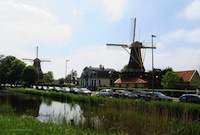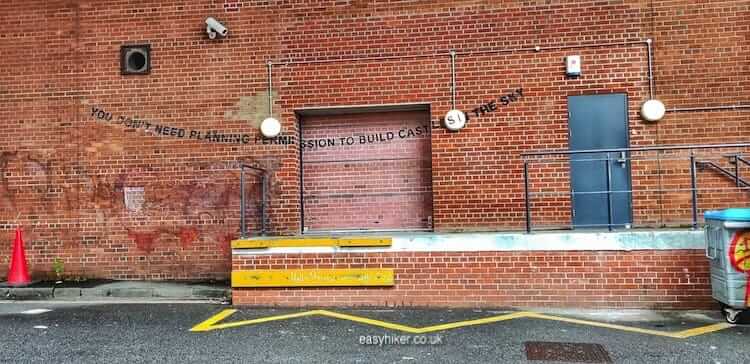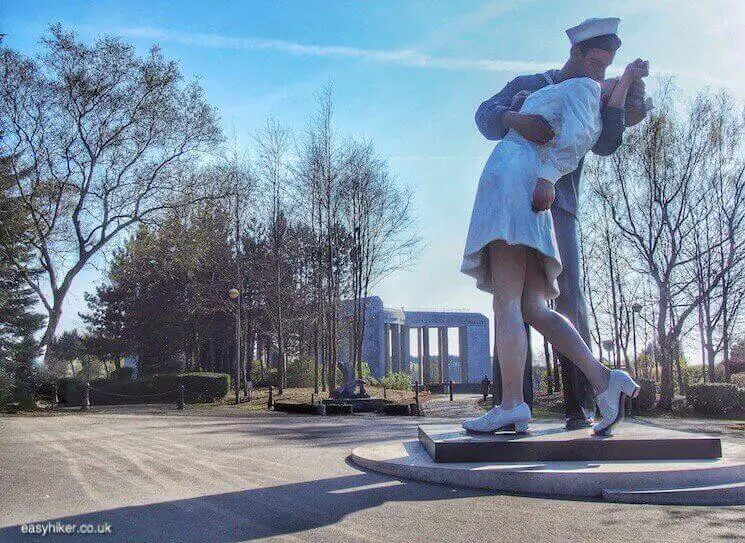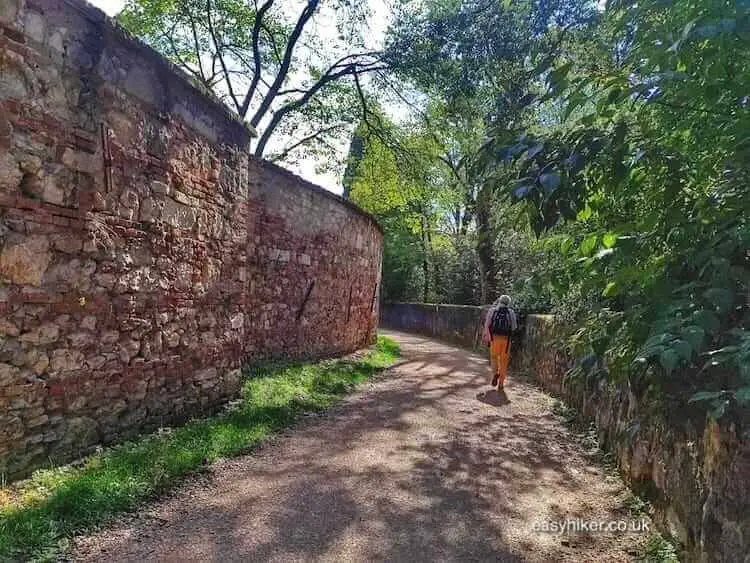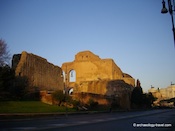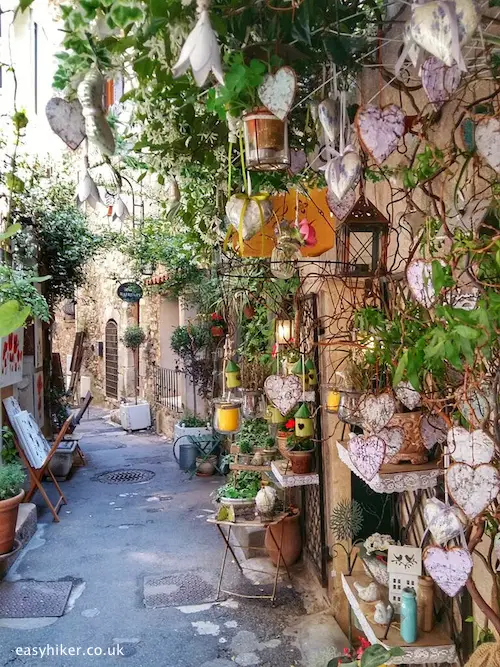Art in the public arena: this has been the overriding topic of all Skulptur Projekte exhibitions in the West German town of Münster since 1977.
Every ten years – the event coincides with every other documenta at Kassel, modern art’s most famous regular showcase – cutting-edge sculptures are put on display across the historic Old Town and even in the surrounding, often park-like countryside, allowing the visitors to combine an introduction into the latest trends of modern art with a civilized outdoor experience.
Related read: Muenster: Modern Art Hotspot
This is clearly one reason why the Skulptur Projekte is not only popular with the general public, but also with international art journalists who come to Germany (mainly) for the documenta and are frequently glad to seize this opportunity of escaping Kassel’s exhibition halls and relentlessly sombre art for – in their own words – “a breath of fresh air”, a couple of hours by train or car to the West.
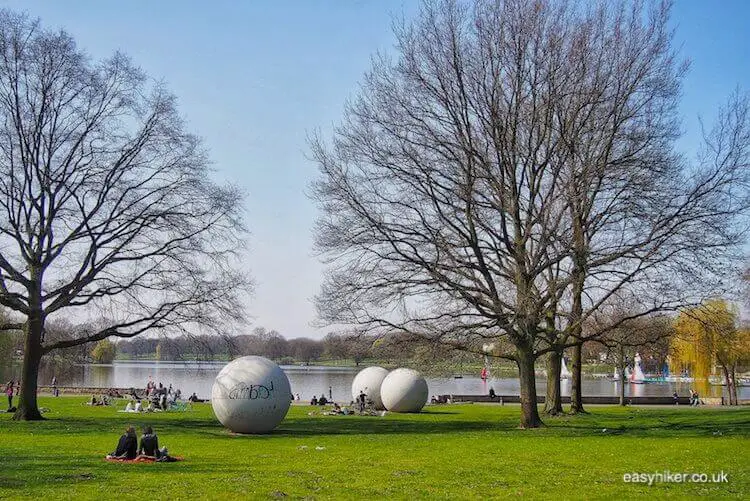
Take a breath of fresh air in the Skulptur Projekte 2017 Muenster
For a brief orientation walk of the Skulptur Projekte 2017 Muenster, start by turning left out of the city’s central station and left again into the eerie surroundings of the road tunnel, currently used as a storage space for Münster’s favourite means of transport …
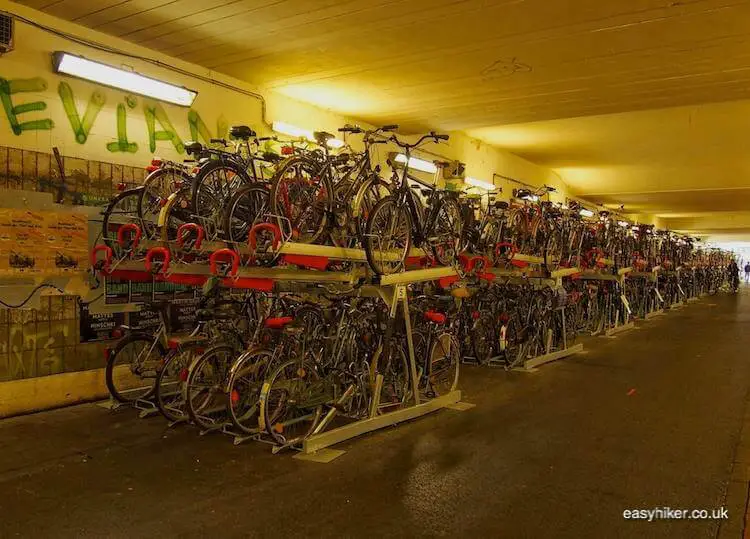
… and then listen closely.
Emeka Ogboh’s “Hamburg Tunnel” sound sculpture, based on works by the late composer Moondog (who died in Münster), serves as a useful introduction into the Skulptur Projekte 2017 Muenster, many of whose exhibits question and extend the concept of sculpture.
The show features various sculptures in dimensions other than space (such as time) as well as works that have not been created by a sculptor’s “conventional” tools, using the human body (in dance and performance, e.g.) – or, as here, sound.
Related read: Feast on Art in Marl
Trace back your steps and continue down Bahnhofstrasse, leaving the station building on your right. Cross over to your left at the large intersection in the direction of the town centre.
A little further up on your left hand side, Justin Matherly’s Nietzsche’s Rock references the so-called Nietzsche Rock in Switzerland that, according to the philosopher himself, inspired his idea of the “eternal return of the ever-same”.
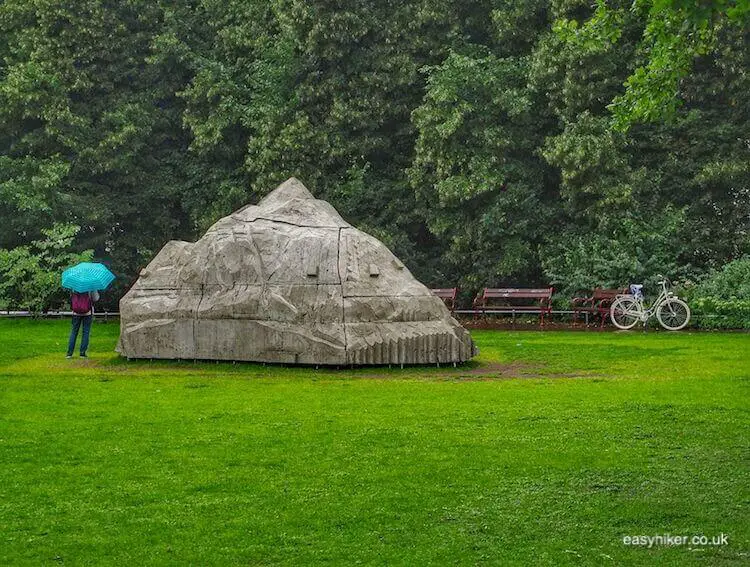
Cross the leafy Promenade avenue into Salzstrasse. After approx. 100 metres on your left hand side, in front of the Erbdrostenhof Palace, Nairy Baghramian (who has exhibited at the Skulptur Projekte before) continues her dialogue with public space and history through Privileged Points, elements that have seemingly been left unassembled for a sculpture that is designed to look and feel “unfinished”.
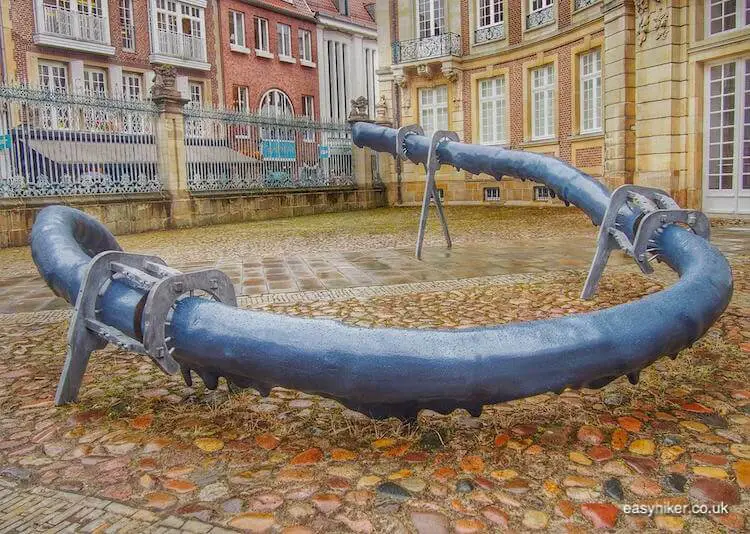
Continue down Salzstrasse before crossing the Prinzipalmarkt into Domplatz, the historical town centre. At the very end of this square, you will find the Westfälisches Landesmuseum around which several exhibits of this year’s show are on display, including John Knight’s Spirit Level …
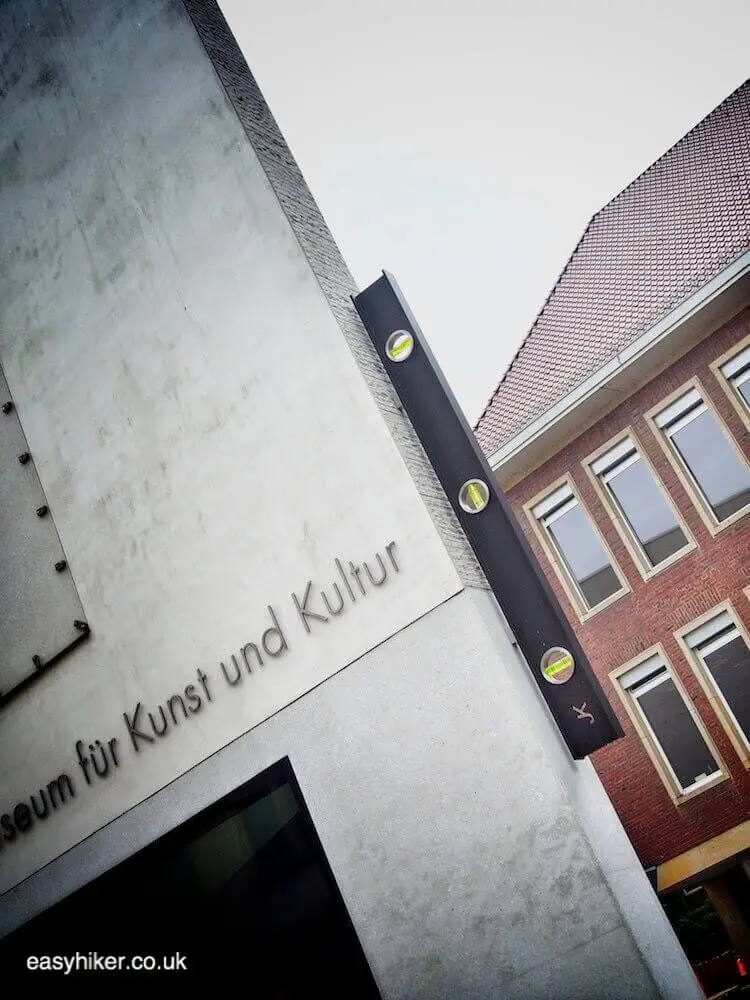
… as well as Cosima von Bonin’s and Tom Burr’s installation Archer, a self-ironic comment on the efforts of younger artists to emancipate themselves from classical modernists such as Henry Moore (who has created the “fragile” objet d’art – as it says on the lorry – that is supposedly about to be hauled away).
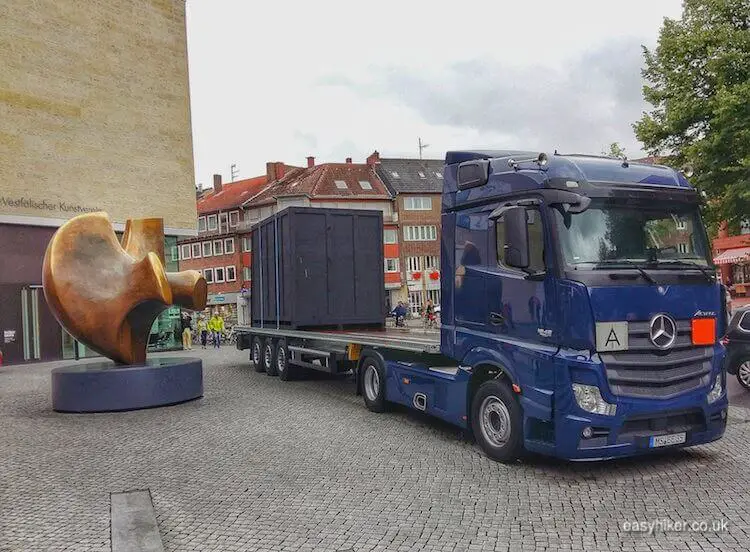
Turn right behind the sculpture into Aegidiistrasse for the wry comment of “Peles Empire” (aka Barbara Wolff and Katharina Stöver) on historicism in architecture and its attempt of recreating a largely fictitious past.
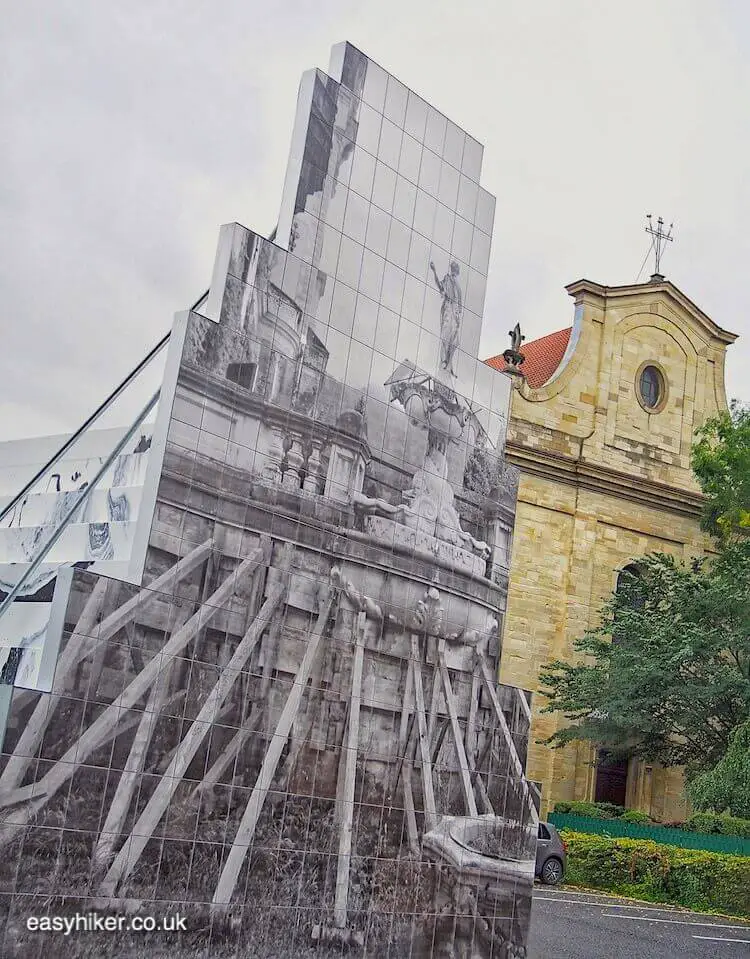
Cross the churchyard and turn right into Königsstrasse. Immediately behind the Promenade, the old city wall converted into a circular walkway around town, you will find Lara Favaretto’s The Stone, which stands on your left hand side in defiant opposition to a colonial memorial.
This “momentary monument” is a giant charity tin that will be ceremonially shattered at the end of the show. Its rubble will be redistributed around the city, and the money that visitors have donated will be given to a local refugee foundation.
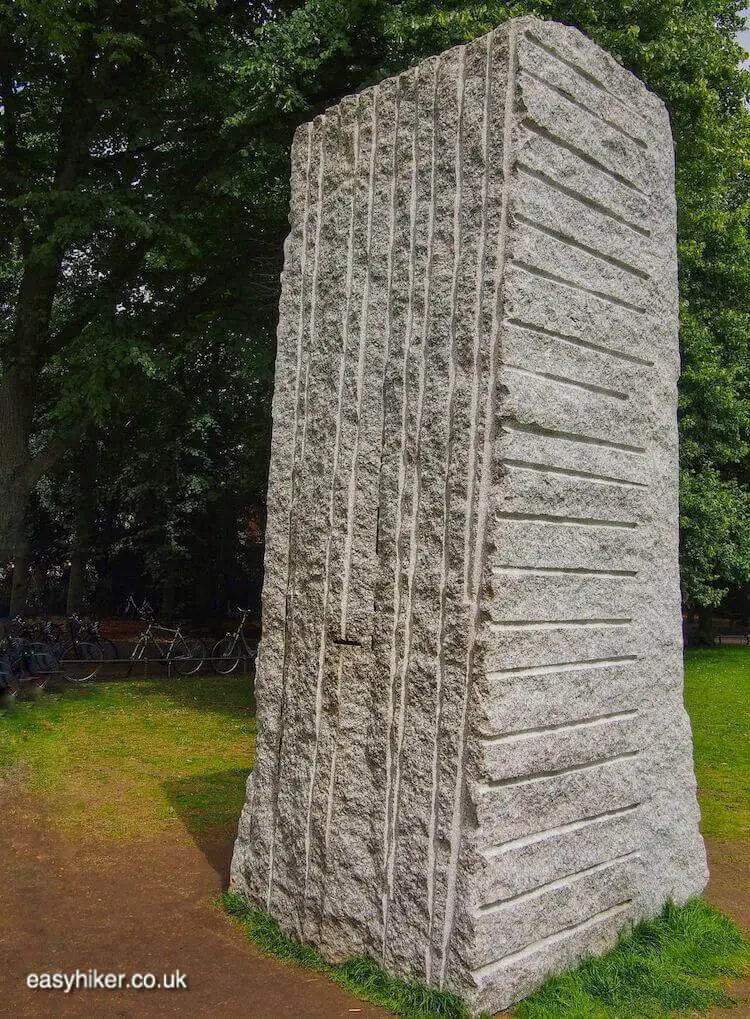
Turn right on the Promenade for a brief but scenic walk to the Aasee city lake. Walk down leafy Himmelreichallee for approx. 500 metres (with the lake on your left hand side), then turn right into the premises of the LBS bank.
At the end of the building complex, you will find an open door and the room with Hito Steyerl’s light-and-video installation “Hell YeahWe FuckDie” which builds a bridge between the present and a robotic future, between technology and animal kingdom (the LBS buildings were erected on the former grounds of the municipal zoo).
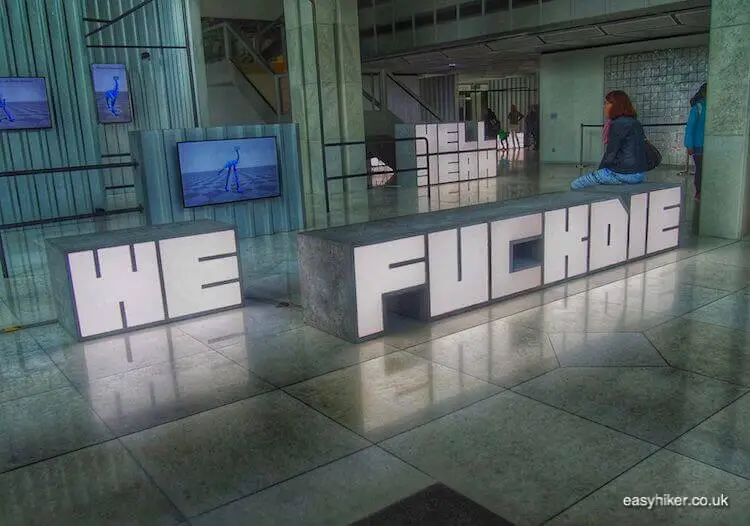
Walk through the beautiful garden at the back of the bank into the grounds of the Westfälische Schule für Musik and look for Thomas Schütte’s haunting and mysterious Nuclear Temple.
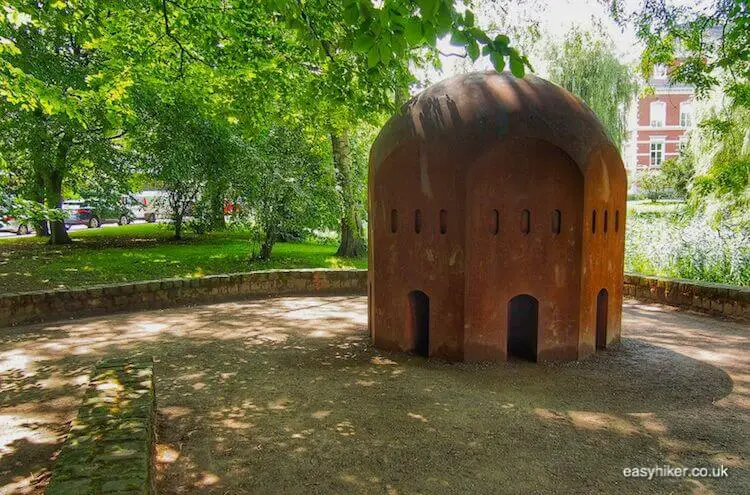
Continue via Himmelreichallee and Hüfferstrasse (right turn) to the local University’s central building, cross the parking lot in front and use the underpass to cross the busy road ahead of you.
In this underpass, Aram Bartholl has installed technical equipment that powers an LED light source with energy generated by candlelight: a subtle, “anti-poetic” inversion.
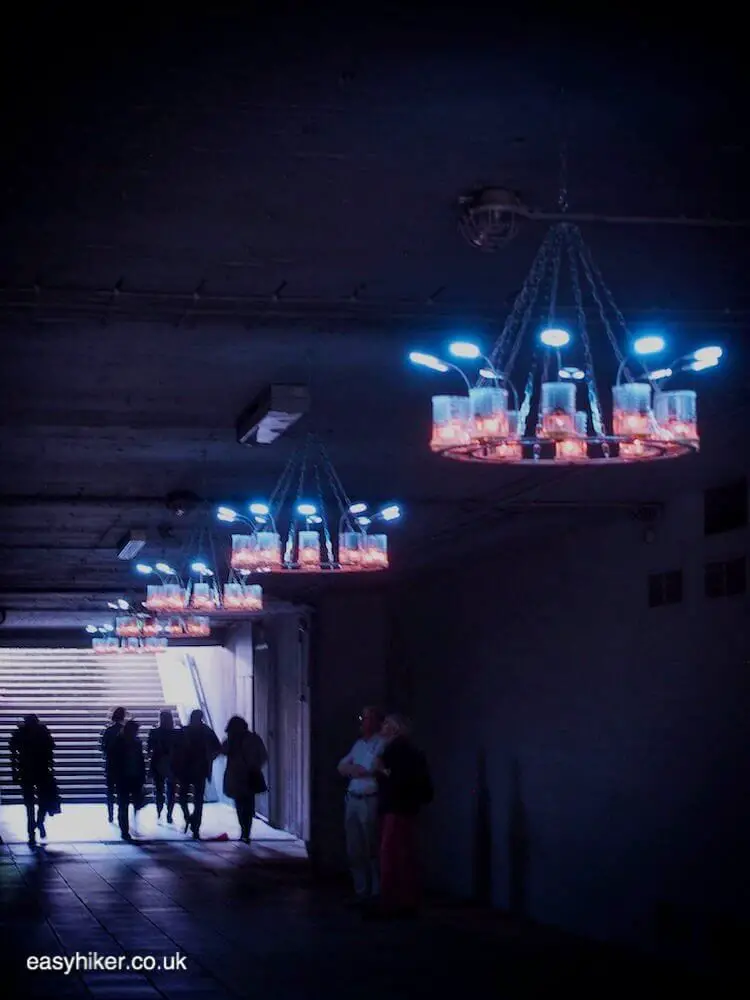
If you now continue straight ahead, strolling through the gardens of the university’s Law Faculty, you will return to Domplatz in about 10 minutes.
Remember: the above route is just an orientation tour around the centrally located exhibits, designed to take no more than two or three hours.
If you have more time, you should visit the works in the North of the city by Nicole Eisenman and Turner-Prize laureate Jeremy Deller, the latter an exhibit of diaries by allotment holders over a period of 10 years, a sculpture in time on a modest yet monumental scale.
On top of that, you can sample several works of performance art across the town centre, including one in the historic Friedenssaal of the old City Hall.
For a full list of all the attractions of the Skulptur Projekte 2017 Muenster, consult Google maps here. All performances and exhibitions are free to visit, but some have restricted opening times.
If you have time for only one excursion outside the city centre, we recommend Ayse Ermen’s On Water, an under-water bridge that allows visitors to cross a former industrial canal on foot. Fun for the entire family is guaranteed.
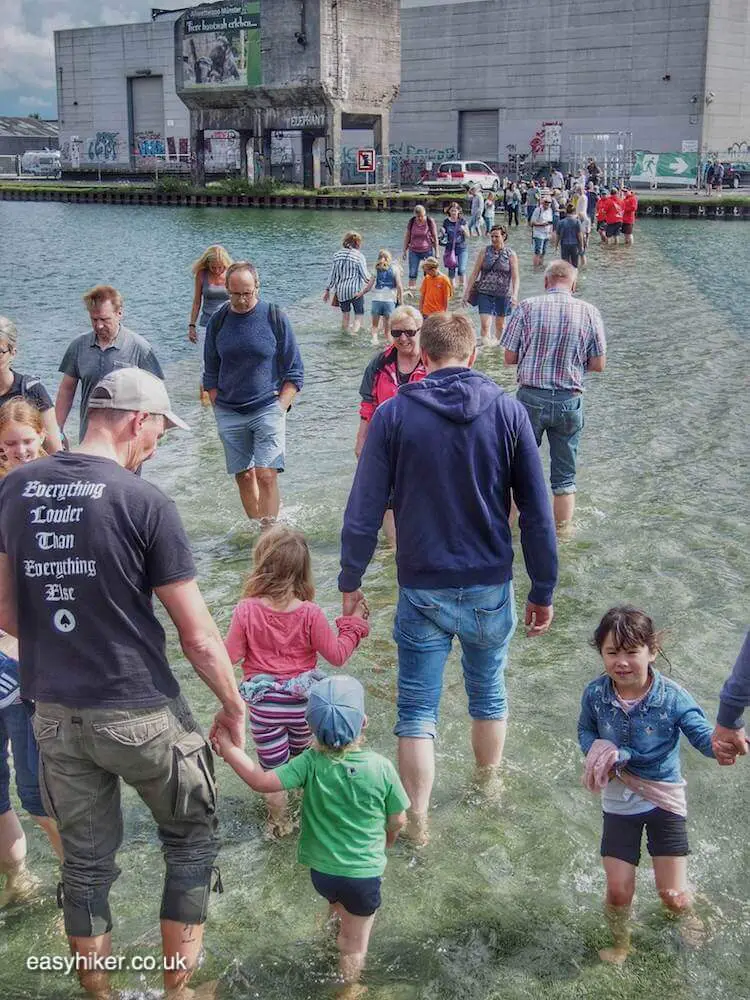
If you are planning a longer trip, it would be a good idea to work in visits to exhibits from past shows, many of which are still in place. We have featured such works from previous editions of the Skulptur Projekte.
For the Skulptur Projekte 2017 Muenster, some sculptures will probably stay in Münster, but most will go. If you want to see them all, be sure to visit before it closes on 1 October 2017.

